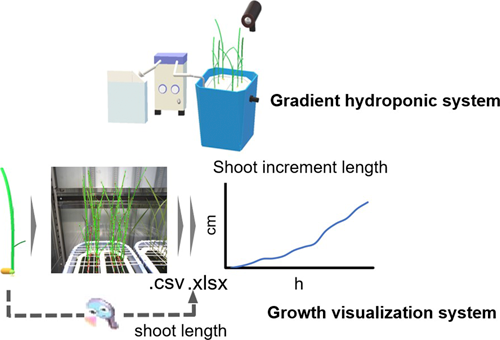- 著者
- Ryo Nakabayashi Tomoko Nishizawa Tetsuya Mori Hiroshi Sudo Isao Fujii Takashi Asano Kazuki Saito
- 出版者
- Japanese Society for Plant Biotechnology
- 雑誌
- Plant Biotechnology (ISSN:13424580)
- 巻号頁・発行日
- vol.36, no.4, pp.265-267, 2019-12-25 (Released:2019-12-27)
- 参考文献数
- 6
- 被引用文献数
- 8
Asparaptine, a conjugate of L-arginine and asparagusic acid, was found in green asparagus (Asparagus officinalis) using ultrahigh-resolution metabolomics for sulfur-containing metabolites (S-metabolites), called S-omics. Asparaptine has been shown to inhibit the activity of angiotensin-converting enzyme. Larger amounts of this S-metabolite are therefore required for further analysis; however, there are limitations that asparagus is a perennial plant and its spears, wherein asparaptine accumulates, can be mainly harvested at the spring to summer season. In order to overcome these, we prepared a callus and suspension cell line from green asparagus. Untargeted metabolome analysis using liquid chromatography-tandem mass spectrometry was performed in the materials as well as spears and three calluses derived from wild type Asparagus. The analysis demonstrated that the amount of asparaptine in the callus derived from the green asparagus was more than the others per mg dry weight. The suspension cell line treated with methyljasmonate showed the induction of asparaptine, suggesting that the asparaptine production is modifiable under appropriate culture conditions. The described materials can be utilized for the production of asparaptine and in integrated metabolomics to study the biosynthesis of this S-metabolite, which is currently unknown.
- 著者
- Chihaya Fukai Takanari Tanabata Tomoko Nishizawa Mikiko Koizumi Keisuke Kutsuwada Miyako Kusano
- 出版者
- Japanese Society for Plant Biotechnology
- 雑誌
- Plant Biotechnology (ISSN:13424580)
- 巻号頁・発行日
- pp.22.1107a, (Released:2023-01-23)
- 参考文献数
- 22
Nitrogen (N) fertilization is one of the most crucial factors that contribute to increasing food production requiring the generation of rice cultivars with improved N use efficiency (NUE) to maintain yield during low N fertilizer application. To assay NUE extent, we developed a screening system to evaluate shoot growth of each rice cultivar under gradient changes in N concentrations. This system comprises a gradient hydroponic culture and growth visualization systems. The former allows gradient changes in ammonium concentrations, while the latter records the increment in shoot length of individual rice seedlings at given time periods using a fixed-point camera. We chose 69 cultivars including two controls (Oryza sativa L. cv. Nipponbare [WRC01] and Kasalath [WRC02]) from the World Rice Core Collection to investigate shoot growth responses under ammonium-sufficient, ammonium-limited, and low ammonium concentration gradients without transplanting stress. We observed three growth patterns in response to different ammonium concentrations. Subsequently, we selected three representative cultivars (Kasalath, WRC03, and WRC05) for the characteristic responses under the different ammonium environments. Distinct expression patterns of glutamine synthetase 1;2 (OsGS1;2) but OsGS1;1 were observed in response to varying ammonium concentration regimes, indicating that the expression patterns of OsGS1;2 may be a growth marker in terms of shoot growth when transitioning from ammonium-limited to low ammonium concentrations. This system with the level of OsGS1;2 allows us to screen for candidate cultivars that return high NUE in low N environments.
- 著者
- Ryo Nakabayashi Tomoko Nishizawa Tetsuya Mori Hiroshi Sudo Isao Fujii Takashi Asano Kazuki Saito
- 出版者
- Japanese Society for Plant Cell and Molecular Biology
- 雑誌
- Plant Biotechnology (ISSN:13424580)
- 巻号頁・発行日
- pp.19.1002a, (Released:2019-12-18)
- 参考文献数
- 6
- 被引用文献数
- 8
Asparaptine, a conjugate of L-arginine and asparagusic acid, was found in green asparagus (Asparagus officinalis) using ultrahigh-resolution metabolomics for sulfur-containing metabolites (S-metabolites), called S-omics. Asparaptine has been shown to inhibit the activity of angiotensin-converting enzyme. Larger amounts of this S-metabolite are therefore required for further analysis; however, there are limitations that asparagus is a perennial plant and its spears, wherein asparaptine accumulates, can be mainly harvested at the spring to summer season. In order to overcome these, we prepared a callus and suspension cell line from green asparagus. Untargeted metabolome analysis using liquid chromatography-tandem mass spectrometry was performed in the materials as well as spears and three calluses derived from wild type Asparagus. The analysis demonstrated that the amount of asparaptine in the callus derived from the green asparagus was more than the others per mg dry weight. The suspension cell line treated with methyljasmonate showed the induction of asparaptine, suggesting that the asparaptine production is modifiable under appropriate culture conditions. The described materials can be utilized for the production of asparaptine and in integrated metabolomics to study the biosynthesis of this S-metabolite, which is currently unknown.
